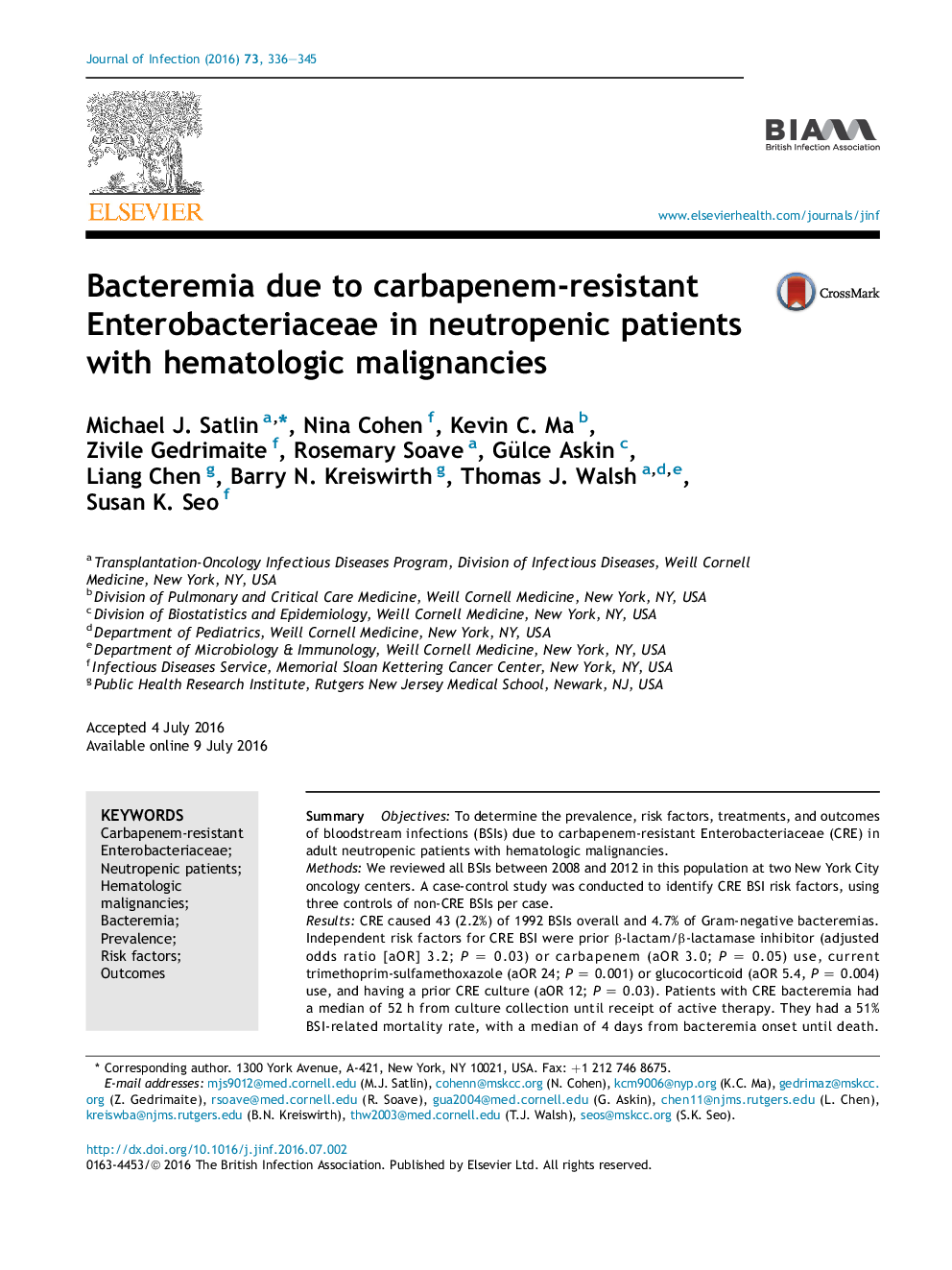| کد مقاله | کد نشریه | سال انتشار | مقاله انگلیسی | نسخه تمام متن |
|---|---|---|---|---|
| 3374360 | 1407919 | 2016 | 10 صفحه PDF | دانلود رایگان |
• CRE caused 2.2% of all BSIs and 4.7% of Gram-negative BSIs in neutropenic patients.
• Multiple antibiotics, steroids and a prior CRE culture were CRE BSI risk factors.
• Patients with CRE BSI had a 2–3-day delay until receipt of CRE-active therapy.
• The CRE BSI-related mortality rate was 51%, with a median of 4 days until death.
• New strategies are needed to mitigate this threat in this vulnerable population.
SummaryObjectivesTo determine the prevalence, risk factors, treatments, and outcomes of bloodstream infections (BSIs) due to carbapenem-resistant Enterobacteriaceae (CRE) in adult neutropenic patients with hematologic malignancies.MethodsWe reviewed all BSIs between 2008 and 2012 in this population at two New York City oncology centers. A case-control study was conducted to identify CRE BSI risk factors, using three controls of non-CRE BSIs per case.ResultsCRE caused 43 (2.2%) of 1992 BSIs overall and 4.7% of Gram-negative bacteremias. Independent risk factors for CRE BSI were prior β-lactam/β-lactamase inhibitor (adjusted odds ratio [aOR] 3.2; P = 0.03) or carbapenem (aOR 3.0; P = 0.05) use, current trimethoprim-sulfamethoxazole (aOR 24; P = 0.001) or glucocorticoid (aOR 5.4, P = 0.004) use, and having a prior CRE culture (aOR 12; P = 0.03). Patients with CRE bacteremia had a median of 52 h from culture collection until receipt of active therapy. They had a 51% BSI-related mortality rate, with a median of 4 days from bacteremia onset until death. CRE-active empirical therapy was associated with a lower 30-day mortality rate (17% vs. 59%; P = 0.08).ConclusionsCRE are lethal emerging causes of bacteremia in neutropenic patients. New strategies are needed to shorten the delay in administration of CRE-active agents and improve outcomes in this vulnerable population.
Journal: Journal of Infection - Volume 73, Issue 4, October 2016, Pages 336–345
